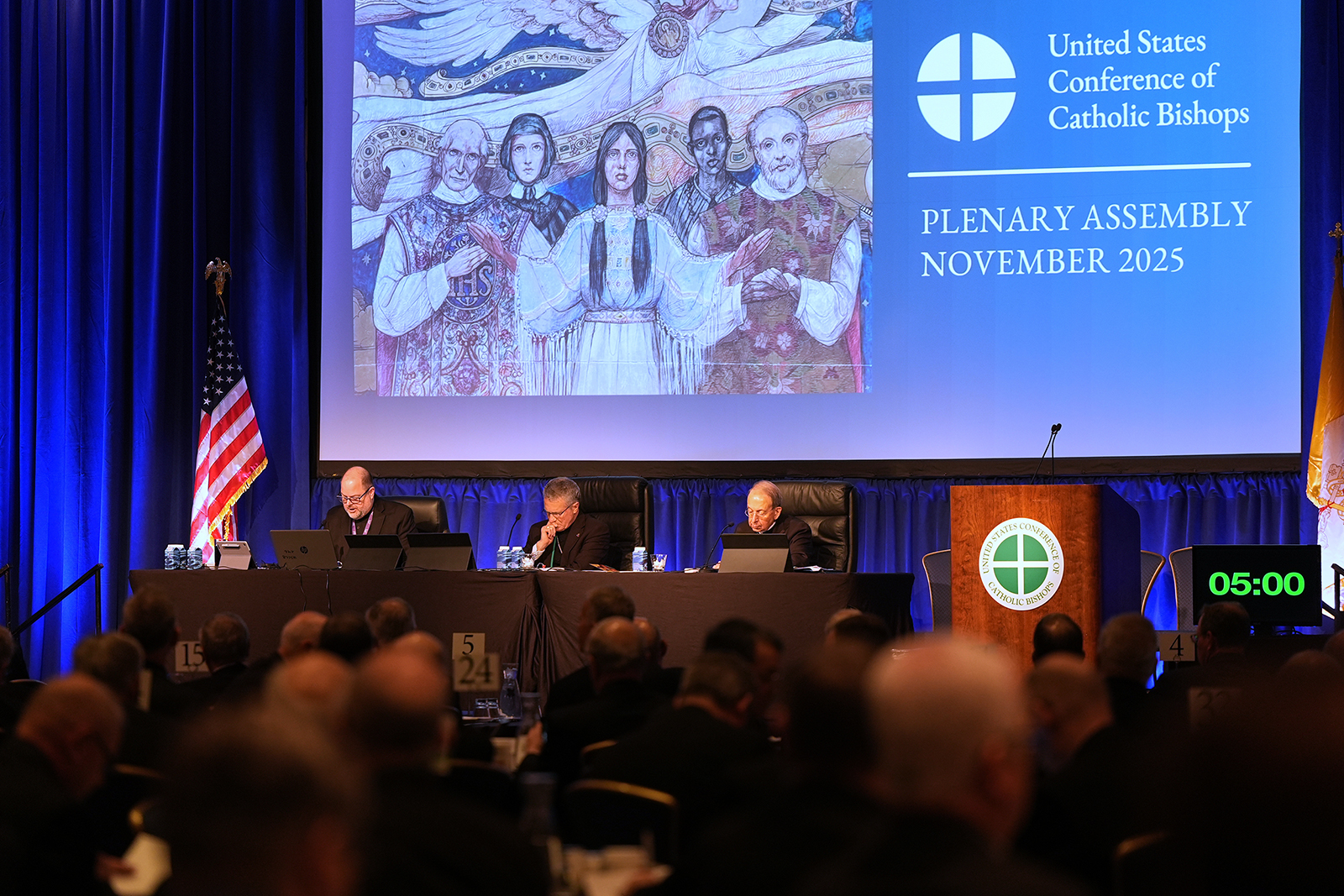
(RNS) — The technical name for the color of Catholic bishops’ sashes and skullcaps is “amaranth red,” taken from the bright flowers of the amaranth plant. People familiar with buying color toner for their printers will likely identify it as magenta.
Traditionally, amaranth’s purply-red represents authority (royal robes) mixed with martyrdom (blood red), but I prefer to think this of magenta’s mashup of red and blue: It expresses how, in our polarized republic, the U.S. Catholic bishops have a solemn duty not to fall into idolatrous support for either the progressive blue camp or the conservative red camp.
Being neither blue nor red might sound like occupying the mushy middle, but in fact the bishops defend and preach a Gospel message that, though neither red nor blue, is beautiful and striking. There is nothing mushy about the color magenta.
You know the bishops are striking the right balance when critics find no consistent way to fit them into right-left, red-blue categories. This was certainly on full display at their annual meeting in Baltimore last week.
On the last day of the meeting’s public session, the bishops issued a “special message” decrying the mass deportations currently being pursued by the Trump administration. Catholics and others on the right lambasted the bishops’ message, with some calling the bishops globalists and traitors, motivated by the loss in federal funding to church social service agencies serving immigrants and refugees. Others simply suggested that the bishops failed to underscore the point that immigrants to this country need to follow our immigration laws.
Others noted that the new vice president of the U.S. Conference of Catholic Bishops, whom the bishops elected at the meeting, is Bishop Daniel Flores of Brownsville, Texas, an outspoken advocate of immigrants who has called mass deportation a “brutal proposal” and compared it to driving someone to an abortion clinic — because it often involves sending migrants back to places where they are marked for death. Supporting deportation in these situations, Flores has said, constitutes “formal cooperation with an intrinsic evil.”
So the U.S. Bishops are enemies of the new right and of the Trump administration?
Not so fast. Before overwhelmingly voting for the special message against mass deportations, the bishops also overwhelmingly passed new Ethical and Religious Directives for Catholic hospitals formally banning so-called gender-affirming care. LGBTQ+ solidarity groups such as Dignity USA harshly criticized the new guidance, accusing the bishops of trying to “impose long-standing and outdated Catholic doctrine on people with critical medical needs.”
The same Bishop Flores who called out the administration on its immigration policies spent the past five years leading the USCCB’s powerful doctrine committee, which in 2023 released an important teaching document offering devastating arguments against contemporary gender ideology. The document drew attacks from the left, with one activist saying in The Washington Post, “The bishops are jumping on the bandwagon of attacks on trans health care in the political sphere.”
Oh, and along with electing Flores USCCB vice president, the bishops elected Archbishop Paul Coakley of Oklahoma City president. Big media outlets, as Phil Lawler pointed out, rushed to paint him with a secular brush. The Los Angeles Times, The Associated Press, PBS Newshour and ABC News all headlined their stories about Coakley’s election using the term “conservative culture warrior.” A day later Coakley celebrated the success of a campaign to gain clemency for Tremane Wood, who had been facing the death penalty in Oklahoma.
This magenta Catholic approach — one that refuses to shove the gospel message of Jesus Christ into support for the red or blue secular factions — is anything but new for our bishops. The last time a U.S. president engaged in mass deportation, it was under the Obama administration, and the bishops stood tall then as well. They have also clearly criticized the Trump administration for the president’s support for IVF.
Our political and ideological realignment is becoming more intense as the two major parties and their candidates position themselves for the post-Trump cycle. Absurdly, yesterday’s “blue” idea is today’s “red” idea, and vice-versa. The simplistic division between red and blue makes even less sense when we attempt to apply it to the Catholic church. The U.S. bishops should be praised for explicitly rejecting it and instead cleaving to the gospel. The good news of Jesus Christ is not red or blue, but a brilliant and beautiful magenta.
